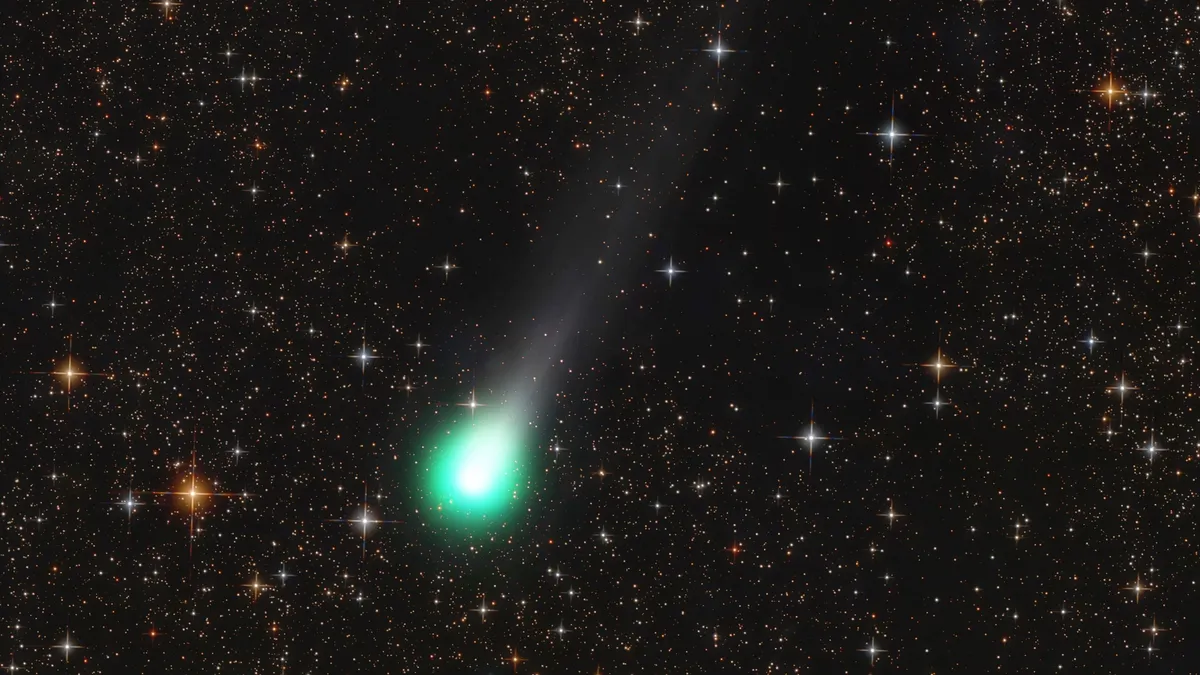
If you are eager to witness a celestial spectacle, your best opportunity arises early this week. After a lengthy hiatus without any comets bright enough to be seen without specialized equipment, two comets have emerged simultaneously: Comet C/2025 A6 (Lemmon) and Comet C/2025 R2 (SWAN).
Comet Lemmon, despite its name, may resemble a lime more than a typical comet. This dusty snowball from the outer solar system is set to reach its closest point to Earth on Tuesday, October 21. At this time, it is expected to shine at its brightest, having reached a magnitude of 4.5, as reported by SpaceWeather.com. This brightness is comparable to that of the Beehive Cluster (M44) and is only slightly dimmer than the Andromeda Galaxy (M31).
While Comet Lemmon can technically be seen with the naked eye in exceptionally dark skies, observers will likely need binoculars to catch a glimpse of its fainter companion, Comet C/2025 R2 (SWAN).
Comet SWAN will come closest to Earth on Monday, October 20, just a day before Comet Lemmon. However, it is significantly dimmer, with a magnitude of 5.9. In astronomy, a higher magnitude indicates a dimmer object, making Comet SWAN a more challenging target for amateur astronomers.
The optimal time to observe both comets this week will be approximately an hour and a half after sunset. For precise timings, you can consult local sunset times on Timeanddate.com.
On Monday, Comet Lemmon will be visible in the northwest sky, near the Big Dipper and the bright star Arcturus, situated close to the horizon. To locate it, follow the arc of stars in the handle of the Big Dipper to reach Arcturus; the comet will be about two-thirds of the way along this path. On Tuesday, it will appear slightly higher in the sky.
For those searching for Comet SWAN, look towards the southwest for the Summer Triangle, which includes the bright stars Vega, Deneb, and Altair. Comet SWAN can be found about halfway between Altair and the horizon.
For those interested in astrophotography, our comprehensive guide provides tips and techniques to effectively photograph these stunning celestial objects.
It’s fascinating to note that Comet Lemmon and Comet SWAN are on vastly different trajectories. Comet Lemmon will approach within 56 million miles (89 million kilometers) of Earth on Tuesday, according to The Sky Live. This comet is on a long journey, looping around the sun on November 8 during its 1,350-year orbit. Interestingly, gravitational interactions with Jupiter have shortened its orbital period by nearly 200 years, meaning Comet Lemmon will not return until the year 3179.
In conclusion, this week presents a rare chance to observe two comets in the night sky. Make sure to prepare your binoculars, check the weather, and enjoy this astronomical event!